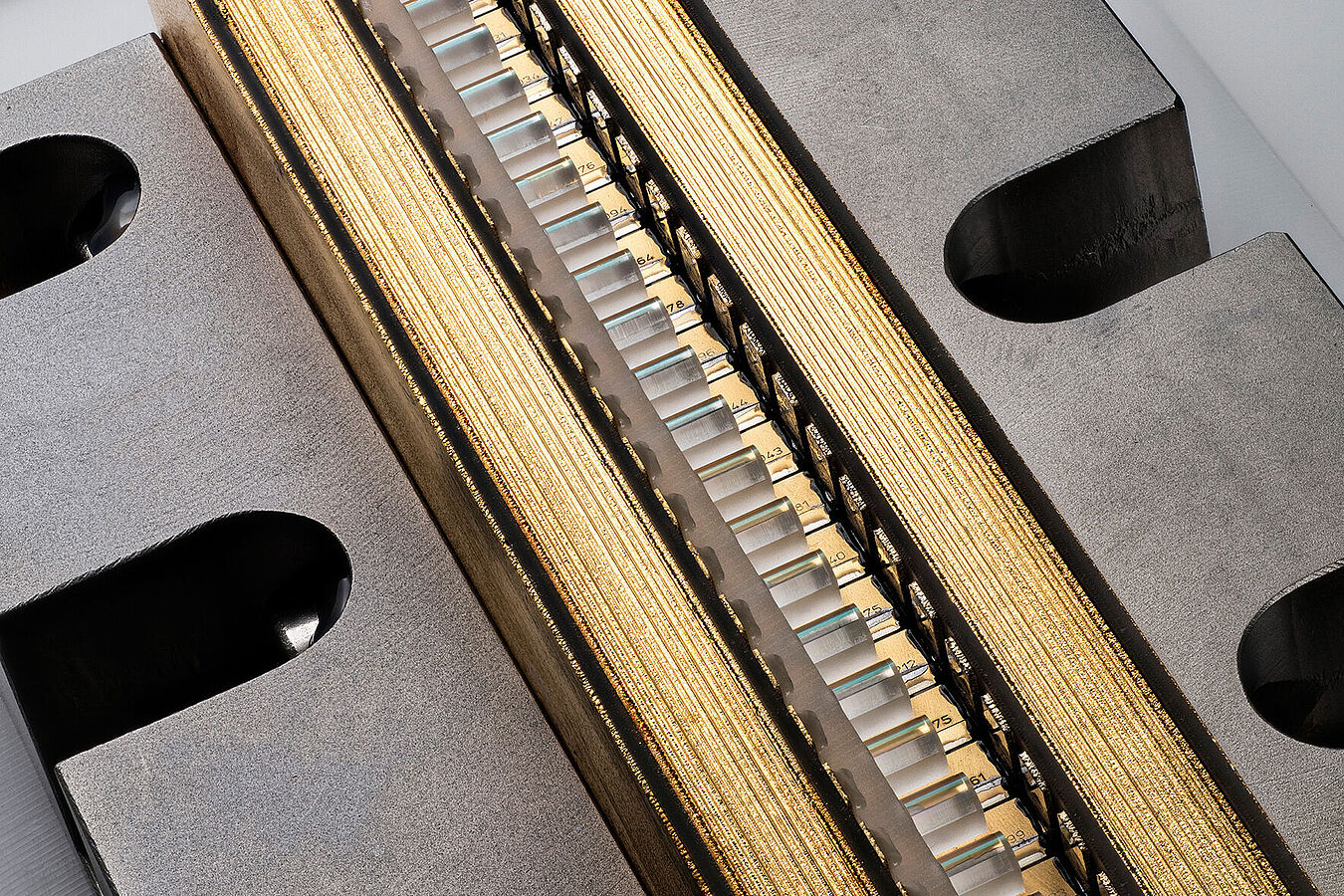Applications include materials processing, LiDAR, medicine, and (Raman) spectroscopy. Progress in UV LEDs is presented jointly with the spin-off UVphotonics.
The Ferdinand-Braun-Institut (FBH) presents its developments and advancements in diode lasers and UV light-emitting diodes (LEDs) at Photonics West 2020, San Francisco (USA), February 4-6, 2020. At the German Pavilion, the institute showcases its full range of capabilities, from design through chips to modules and prototype systems. BeamXpert, another FBH spin-off, demonstrates its software, enabling real-time simulation of laser radiation in optical systems. The FBH is also well represented at the accompanying conferences (1-6 February) with 20 scientific contributions. In addition to its established diode-laser-based light sources, the FBH exhibits at the booth a terahertz camera sensor that operates in a broad frequency range between 500 - 2500 GHz. It offers high sensitivity of NEP ≤ 50 pW/Hz0.5 along with a fast response time. Therefore it is ideally suited for imaging systems used for quality control in industrial applications. It can also be integrated into medical equipment, e.g., for diabetes diagnostics and spectroscopy.
Further exhibits at the booth comprise:
High-power diode laser stacks for high duty cycle operation
In industrial laser technology continuous wave high-power diode lasers are used as pump sources for fiber and disk lasers, where they have conquered the multibillion-dollar market of cutting and welding. There are also many current and emerging applications in industry and basic research for high-energy-class pulsed lasers, which need customized pump sources. To address such high-pulse-energy applications, the FBH combines efficient large aperture (1200 µm) single emitter diode lasers into novel passively-side-cooled multi-kW class stacks, to support high duty cycle quasi-continuous-wave pump applications. Available sources include > 3 kW stacks at 940 nm for pumping Yb:YAG (1 ms 200 Hz) and in a first demonstration at Photonics West 2020 (LASE – Conference 11262, Session 1), > 1 kW stacks at 780 nm for pumping Th:YAG (10 ms 10 Hz).
Next generation LiDAR laser source for line scanners
FBH’s high pulse power laser source with a 48-emitter diode laser bar is ideally suited for 3D object detection, e.g., for line scanners in automotive LiDAR. Scanning LiDARs emit rapid laser pulses which are reflected by objects. The return time of each pulse is then measured by a detector, thereby creating a point cloud of the measured surface. Unlike point scanners, which capture objects point by point via 2D steering mirrors, line scanners use a laser array. Scanning points are thus measured over a wide line covering a large area via 1D laser beam steering and detection of returning laser pulses in a detector row. The FBH laser source delivers 4-10 ns long optical pulses with >600 W pulse peak power at 905 nm wavelength. The wavelength shifts with temperature by 0.06 nm/K only. The DBR-stabilized laser emission has a width of 0.15 nm and >30 dB side mode suppression. The bar is electrically driven by a new in-house developed high-speed GaN driver providing current pulses of up to 800 A with 100 kHz repetition frequency and higher.
Compact dual-wavelength laser turnkey system for Shifted Excitation Raman Difference Spectroscopy (SERDS)
SERDS is a powerful and easy-to-use tool to extract Raman signals efficiently and rapidly from disturbing backgrounds such as fluorescence and daylight. Based on FBH’s dual-wavelength Y-branch DBR-RW lasers, the institute has developed a compact turnkey system, which is a fully operational light source with integrated temperature control and five individual current sources to tailor and adjust the emission. It is programmable using an USB interface. The system offers fast alternating operation between both laser lines for SERDS to extract Raman signals efficiently from disturbing backgrounds. The spectral distance between the two SERDS wavelengths can be electrically adjusted using implemented on-chip micro-heaters. The system has been demonstrated for wavelengths around 785 nm and 671 nm and successfully utilized for measurements on food, soil, and plants.
Visit the Ferdinand-Braun-Institut and its spin-offs at Photonics West 2020, German Pavilion, booth 4545. For an overview regarding FBH contributions to the accompanying conferences see: https://www.fbh-berlin.com/news-dates/dates/detail/fbh-at-photonics-west-2020


